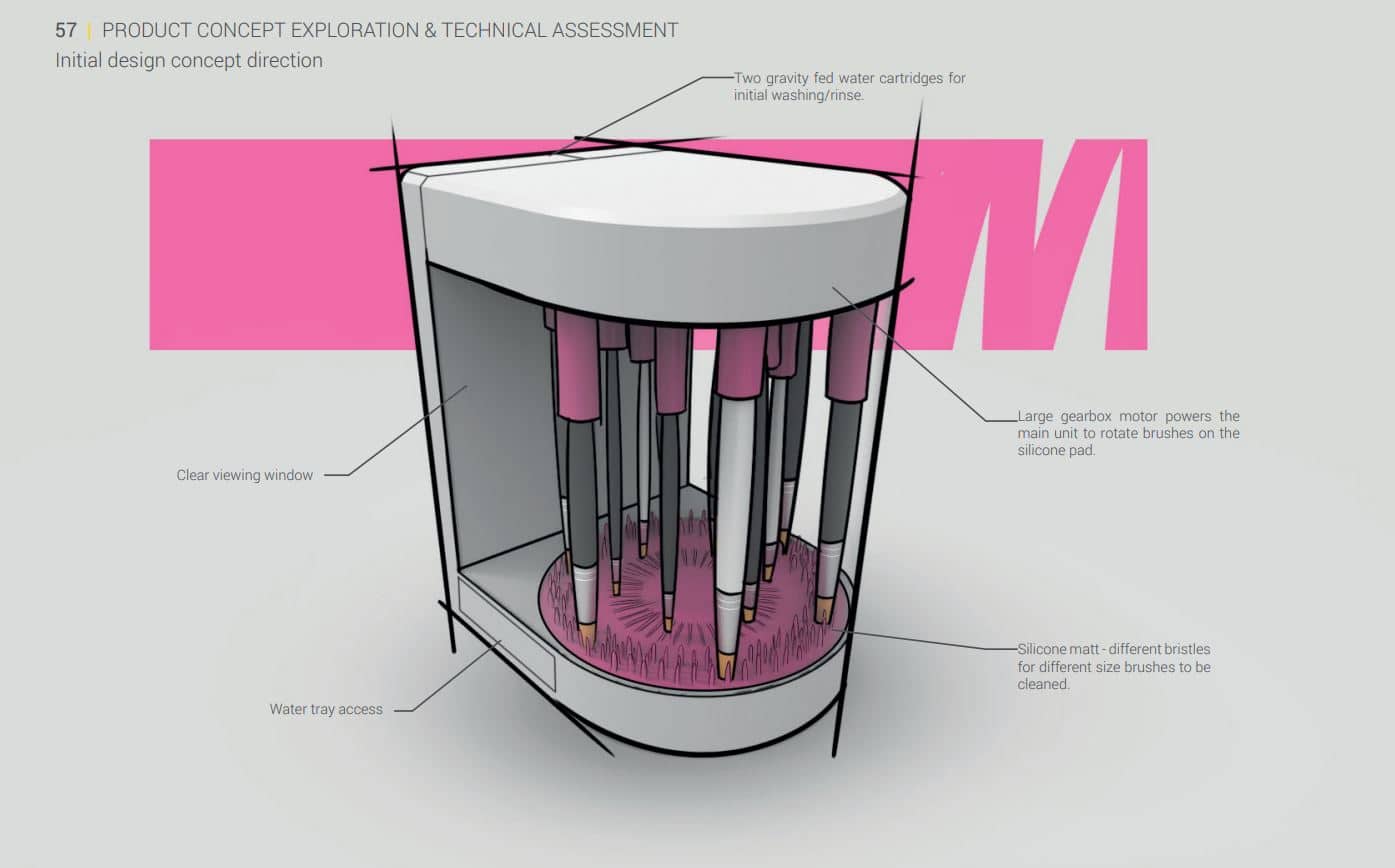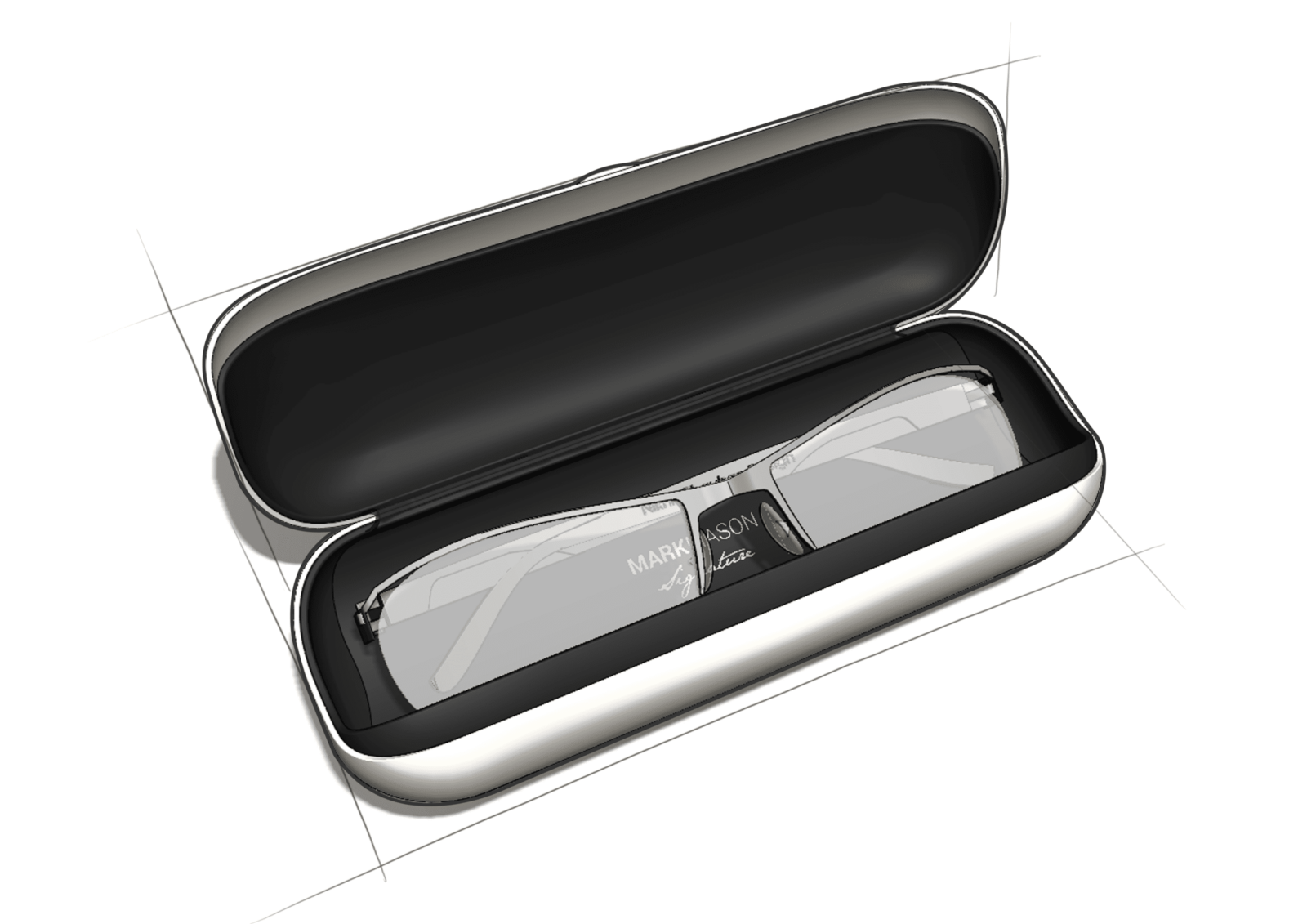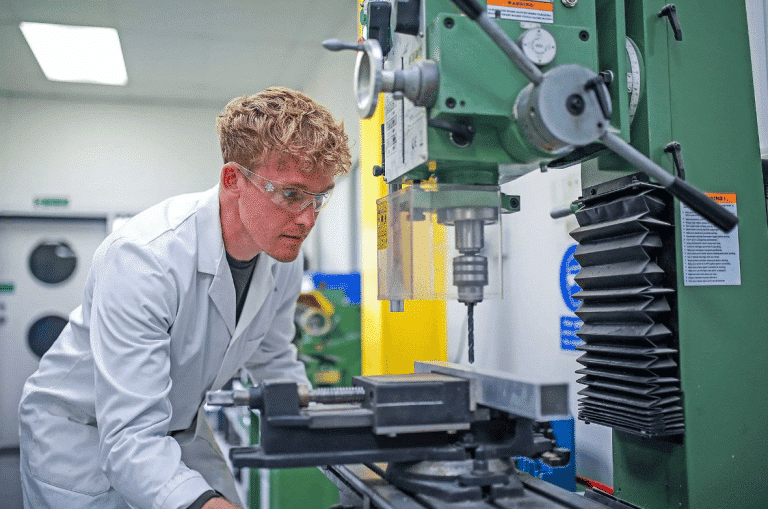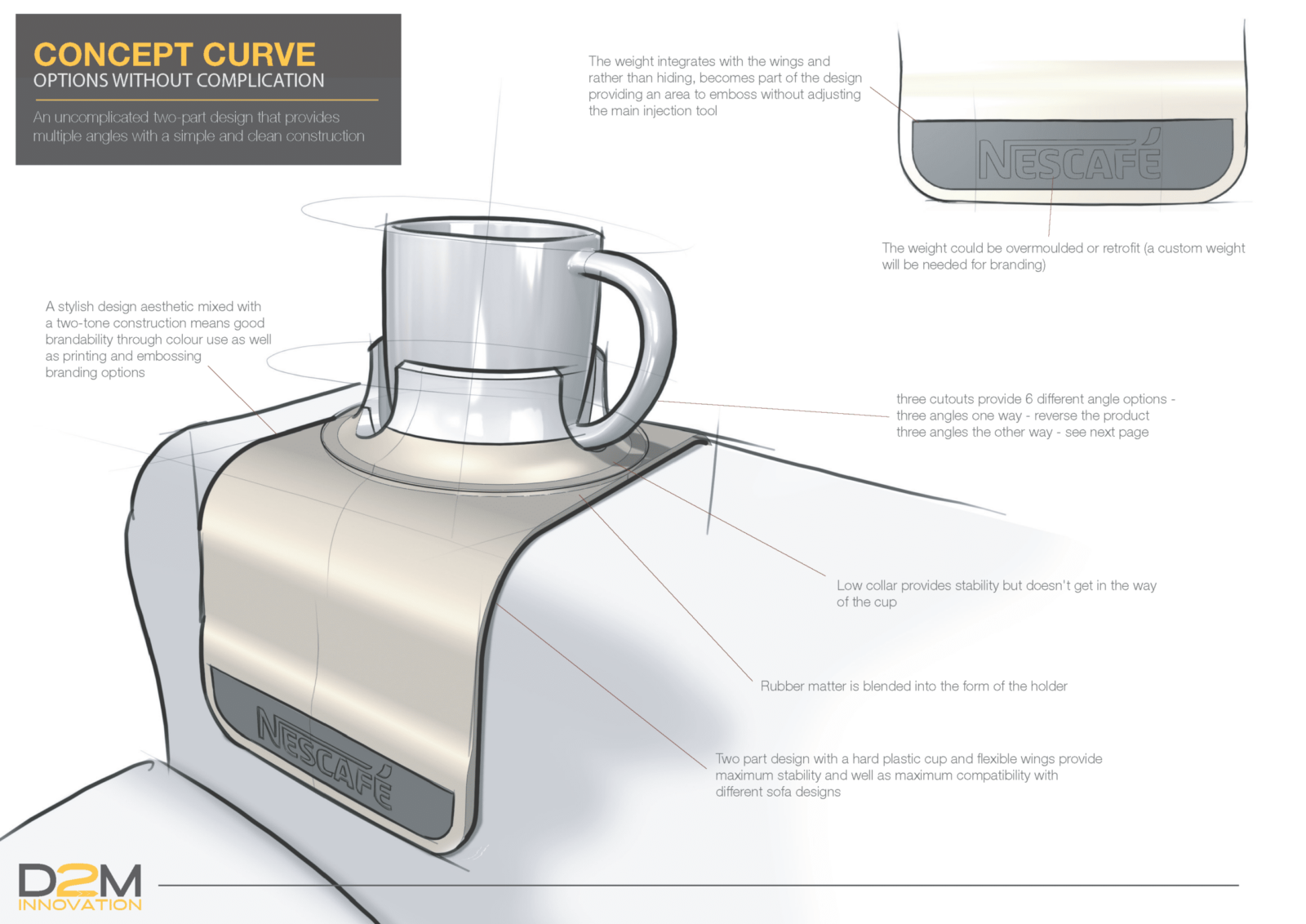Product Concept Development

Our Product Concept Development service is at the heart of innovation, where your initial ideas are shaped into tangible designs. We specialise in early-stage development and employ rapid sketching and preliminary computer-aided design to establish your concepts.
Our Process
Comprehensive Conceptualisation and Profiling
In-Depth Product Profiling: Our first step goes beyond mere idea generation. We begin by thoroughly profiling the product. This involves identifying and narrowing down the target market, understanding the use case and scenarios where the product will be utilised, and researching benchmark products already in the market. This initial profiling is critical in setting a clear direction for the development process.
Key Requirements and Material Research: We identify the essential requirements your product must meet, considering factors such as functionality, durability, and user experience. We conduct preliminary material research if the product involves novel materials, especially in cases like fabric innovation. This step ensures that the concept we develop is not only innovative but also feasible in terms of material sourcing and production.
Brainstorming and Ideation: With a solid understanding of the product’s context and requirements, we engage in a focused brainstorming session. This is where our team, equipped with insights from the profiling stage, generates a range of ideas and concepts. Our aim here is to balance creativity with practicality, pushing the boundaries of innovation while ensuring the ideas remain grounded and executable. This phase is critical for developing a concept that is unique, appealing, and viable in the real world.
Our approach in this initial phase is to blend imaginative thinking with practical considerations, ensuring that the concepts we develop are creative and aligned with market needs and manufacturing realities.
Concept Evaluation and Refinement
In-Depth Analysis for Real-World Application: Following the generation of diverse concepts, our focus shifts to a meticulous evaluation process. This crucial phase involves a comprehensive assessment of each concept against several critical criteria: technical feasibility, cost efficiency, user experience, and market fit.
Material and Manufacturing Considerations: Our analysis delves into the specifics of material selection and manufacturing possibilities. We carefully consider each concept’s material requirements and production methods to ensure practical viability. This step is vital in determining whether a concept can be transformed from a design on paper into a tangible, marketable product.
Ergonomics and User Experience: A core part of our evaluation is understanding how the product will be used by its intended audience. We assess the ergonomic aspects and overall user experience of each concept, ensuring that the final product is functional, user-friendly, and appealing to your target customers.
Benchmarking and Market Research: To ensure our concepts are competitive and relevant, we benchmark them against existing products in the market. This research provides valuable insights into current market trends, customer preferences, and potential gaps our concepts could fill.
Manufacturing Experience: We use our understanding of production challenges and potential costs associated with each concept. This collaboration is crucial in aligning our designs with practical manufacturing capabilities and market expectations. This is one of the main reasons that we only employ senior, experienced designers to work on projects. Junior designers often just don’t have the necessary experience to design products, from the outset, for cost effective manufacture.
Balancing Innovation and Practicality: This extensive experience is crucial in guiding you through this evaluation phase. We balance preserving the innovative essence of your initial idea and moulding it to fit real-world constraints. This balance is crucial in developing a concept uniquely aligned with your vision that is feasible, cost-effective, and desirable in the market.
By the end of this step, we ensure that the selected concept is not just a manifestation of creative thought but a well-rounded, market-ready solution poised for success.
Final Concept Selection
Precision in Concept Finalisation: The concluding phase of our Product Concept Development service is where the most promising concept is carefully selected for further development. This critical decision results from a collaborative effort between you and our team of experts. We present and discuss the refined concepts, integrating your feedback and preferences into our evaluation. This inclusive approach ensures that the final choice aligns with your vision and possesses substantial potential for market success.
Consideration of Key Factors: In making the final selection, we meticulously consider various essential factors. These include production costs, scalability potential, user experience, and aesthetic appeal. We aim to ensure that the chosen concept is innovative, aligned with your brand identity, practical, and feasible from a production and market perspective.
Preparation for Next Stages: Once a concept is selected, we initiate the next crucial steps in the product development journey. This typically involves detailed design work, prototyping, and preparation for manufacturing. The selected concept is refined further, focusing on making it ready for the real-world challenges of production and market entry.
Adaptive and Responsive Process: Our Product Concept Development process is designed to be flexible, adapting to each project’s unique needs and challenges. We ensure that every step, from initial ideation to final selection, is handled with precision and care, considering the end goal of launching a successful product.
By the end of this process, you will have a product concept that is thoroughly vetted, thoughtfully refined, and ready to make a significant impact in the market. Our commitment is to provide a seamless and effective pathway from concept to a market-ready product, ensuring your vision is realised with the highest standards of innovation and practicality.
Balanced Exploration and Practical Innovation
D2M Innovation’s Product Concept Development service is structured to balance creative exploration and pragmatic innovation perfectly. While we encourage a broad scope of ideas, our approach is grounded in the realities of product development and market demands.
For instance, our work on a textile-based pet product demonstrates our systematic approach. Faced with creating a versatile product suitable for different-sized dogs, we revisited the core problem to explore a range of solutions. This led us to a practical yet innovative design that was cost-effective to manufacture and effective across various sizes.
Our process fosters an environment where ideas can be freely explored but are always brought back to practical application. This ensures the final concept is imaginative, viable, and tailored to your product’s specific needs and market context.

Thorough Feasibility and Market Analysis
In our Product Concept Development service, every creative burst is complemented by a stringent feasibility analysis. We evaluate each concept against over ten criteria, including technical feasibility, production costs, and market viability.
Take the Svorl Bottle Brush Project: each design was subjected to a comprehensive evaluation process. This robust analysis ensures that the final choice is innovative, feasible, and market-ready for expectant parents.
Our commitment to informed decision-making helps you navigate the complexities of product development with minimised risks and maximised chances of market success. With D2M Innovation, you’re not just pursuing innovation but investing in a concept with a solid foundation for success.


Collaboration and Concept Refinement
Our approach is fundamentally client-centric, ensuring that your vision and market knowledge are integral to the concept development process. The development of the pet product mentioned earlier, highlighted our emphasis on collaboration. We engaged in a thorough discovery session with the client to understand the nuances of the problem, the market, and previous attempts at solutions. The innovator had a company already selling a range of products and so understood their market very well. This collaboration blended the client’s market insights with our design expertise to create a concept resonating with the target audience.
By partnering with D2M Innovation, you gain more than a service; you gain a committed ally in your product development journey. We work closely with you to refine concepts, ensuring the final product truly represents your aspirations, coupled with our design and market expertise.
In summary, D2M Innovation’s Product Concept Development service offers a unique blend of creativity, practical analysis, and collaborative refinement. Our process is designed to bring your innovative ideas to life, ensuring they are imaginative but also viable and market-aligned. If you’re looking for a partner to help transform your vision into a successful product, D2M Innovation is your ideal choice.

FAQs
What is concept development in product design?
Concept development in product design is the crucial phase where initial ideas are transformed into refined, well-defined concepts. It involves exploring various creative ideas, evaluating their feasibility, and selecting the most promising one to move forward with. This phase lays the foundation for product development, shaping the product’s vision and features.
Why is concept development important for a successful product?
Concept development is vital for a successful product because it ensures that your product idea is innovative, feasible, and market-ready. It helps identify potential issues early in the process, minimise risks, and enhance the likelihood of commercial success. A well-developed concept is a blueprint that guides the subsequent stages of design, prototyping, and production.
What does concept development cost?
The cost of concept development can vary depending on the complexity of the project, the number of concepts explored, and the scope of the services provided. Discussing your specific project requirements with a concept development service provider to get a tailored cost estimate is essential. Remember that investing in thorough concept development can lead to cost savings by avoiding costly changes later in development.
Who should be involved in the concept development process?
Concept development services add significant value to your project by:
- Maximising Creativity: These services encourage creative exploration, allowing for generating innovative ideas that can set your product apart.
- Minimising Risks: Thorough feasibility analysis helps identify potential challenges early, reducing the likelihood of costly changes later in development.
- Client-Centric Approach: Services collaborate closely with you, ensuring the final concept reflects your vision and goals.
- Market Readiness: The concepts developed are positioned for commercial success, considering scalability, market trends, and cost-effectiveness.
- Efficiency: By addressing potential issues in the concept stage, these services streamline the path to production, saving time and costs in the long run.
How do concept development services add value to my project?
Concept development services add significant value to your project by:
- Maximising Creativity: These services encourage creative exploration, allowing for generating innovative ideas that can set your product apart.
- Minimising Risks: Thorough feasibility analysis helps identify potential challenges early, reducing the likelihood of costly changes later in development.
- Client-Centric Approach: Services collaborate closely with you, ensuring the final concept reflects your vision and goals.
- Market Readiness: The concepts developed are positioned for commercial success, considering scalability, market trends, and cost-effectiveness.
- Efficiency: By addressing potential issues in the concept stage, these services streamline the path to production, saving time and costs in the long run.
Overview of Product Concept Development
D2M’s Product Concept Development service is the foundational stage where your initial ideas transform into market-ready products. This service is more than just design; it’s a strategic process that aligns your vision with market demands and practicalities.
Practical and Focused Development: Our approach combines creative imagination with grounded design principles. We start with rapid sketching and early-stage computer-aided design to convert your ideas into tangible concepts. This step is essential in giving your product a realistic shape and form. We emphasise clarity and practicality, ensuring your concept captures the imagination and is viable and functional.
At this stage, we focus on understanding your product’s potential market impact, usability, and manufacturability. It’s not just about standing out with innovation; it’s about laying a solid foundation for a product that can be efficiently developed and successfully launched. This pragmatic approach is designed to clearly understand what the Product Concept Development service entails and how it serves as the crucial first step in bringing your product idea to life.
The Svorl Bottle Brush Project: An Example of Practical Innovation
The Svorl bottle brush project exemplifies our Product Concept Development service, a perfect case study of how we transform initial ideas into market-ready innovations. The challenge was to create an efficient bottle-cleaning solution. Our team embarked on a comprehensive exploration, evaluating a range of mechanisms from intricate mechanical systems to user-centric electronic solutions. This process wasn’t just about design; it involved a deep dive into manufacturing feasibility, cost implications, and patent potential. By integrating the client’s original idea with a broad spectrum of possibilities, we ensured the development of a concept that was innovative, patentable, commercially viable, and appealing to consumers.
Market Viability: The Core of Our Concept Development
All through the development process, we have a keen focus on market viability. In the Svorl project, we focused on the aesthetic and functional aspects of the design. Our assessment extended to the practicalities of production costs and market appeal. This rigorous analysis, stemming from our extensive experience in bringing numerous products to market, is integral to our process. It ensures that the final concept looks good, works well, is aligned with market trends and is cost-effective to produce.
Collaboration is critical in our approach to concept development. During the Svorl project, we maintained a dynamic partnership with our client, ensuring the concept’s evolution was synergistic. This collaboration combines the client’s vision with our design expertise and market knowledge, culminating in a well-rounded, market-ready concept that reflects the client’s initial idea.
D2M’s Product Concept Development service is designed to give life to your ideas. We take your initial vision and transform it into a viable product concept through exploration, evaluation, and collaboration. This stage is crucial as it sets the foundation for developing a new product that is innovative and practical and ready to make a successful entry into the market. With our service, your idea moves from imagination to a concrete concept, prepared for the next design and production stages.